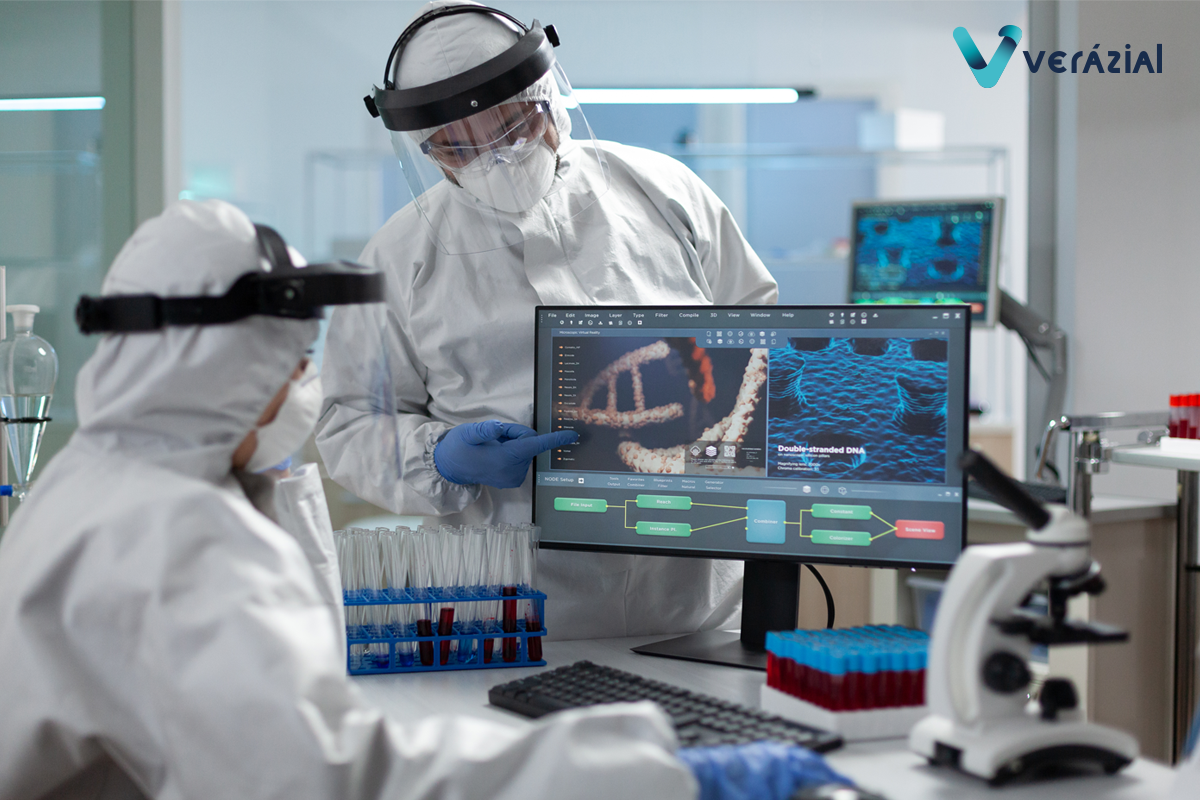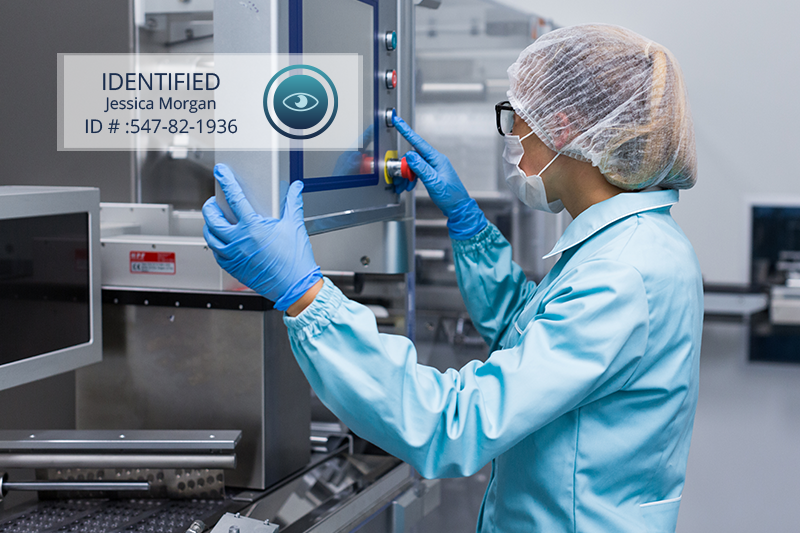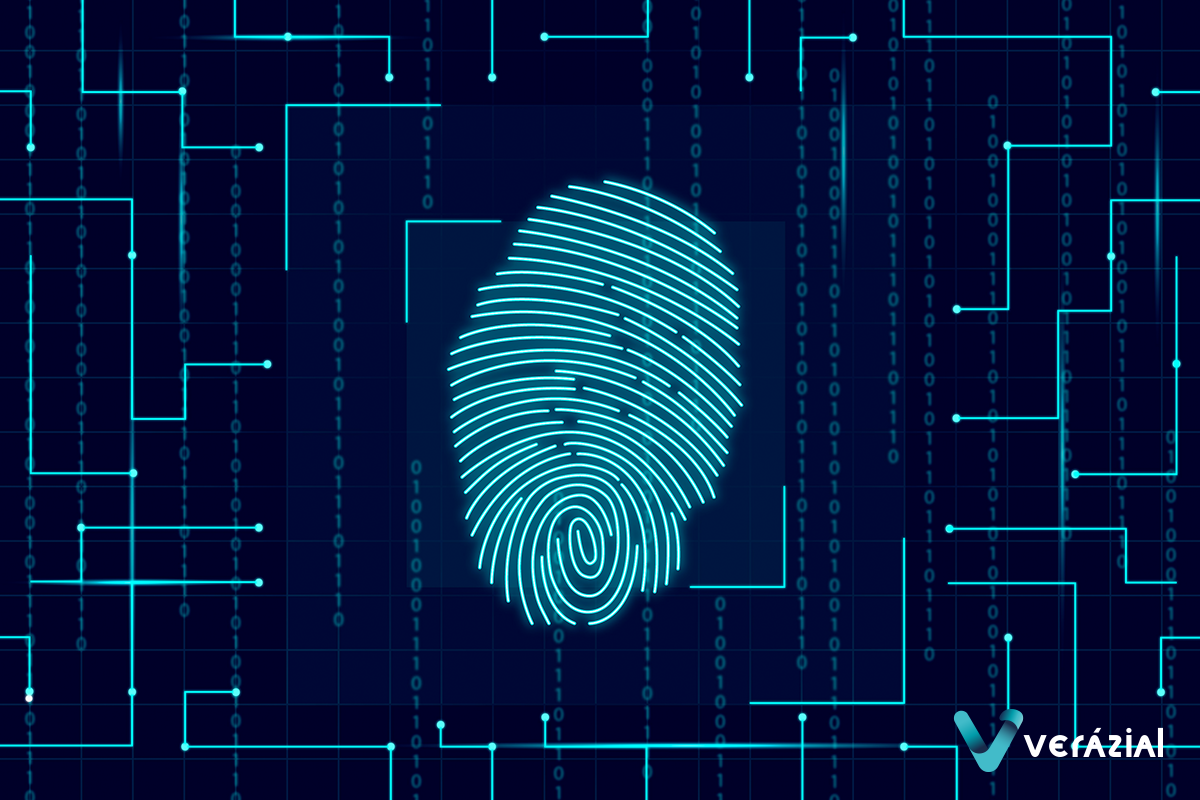Manufacturing in the pharmaceutical industry: employees’ identification and data integrity
Current employee identification methods in pharmaceutical manufacturing processes cause data integrity breaches in GMP regulated environments, which can be solved with biometrics.
The pharmaceutical industry produces medicines that are consumed by patients, and therefore is a regulated sector to preserve the safety of patients.
Data integrity is a fundamental part of GMP (Good Manufacturing Practices) regulated environments, and includes, among other issues, the obligations to comply with for the secure identification of employees in each task.
GMP regulated environments
The national regulations are very similar to each other in general, in line with those from the main regulatory bodies worldwide:


These regulations establish the guidelines the pharmaceutical industry must follow to guarantee the proper manufacturing of medicines, cosmetics and medical products, for their safe use, both human and veterinary.
Regulatory agencies work closely to exchange information about new medicines and ensure their safety. This collaboration involves sharing data on side effects, monitoring clinical trials, and conducting inspections at manufacturers’ facilities to audit and verify regulatory compliance. Together, they work to effectively regulate medicines, ensuring high standards of quality and safety for patients.
Regulation for employees’ identification in GMP environments
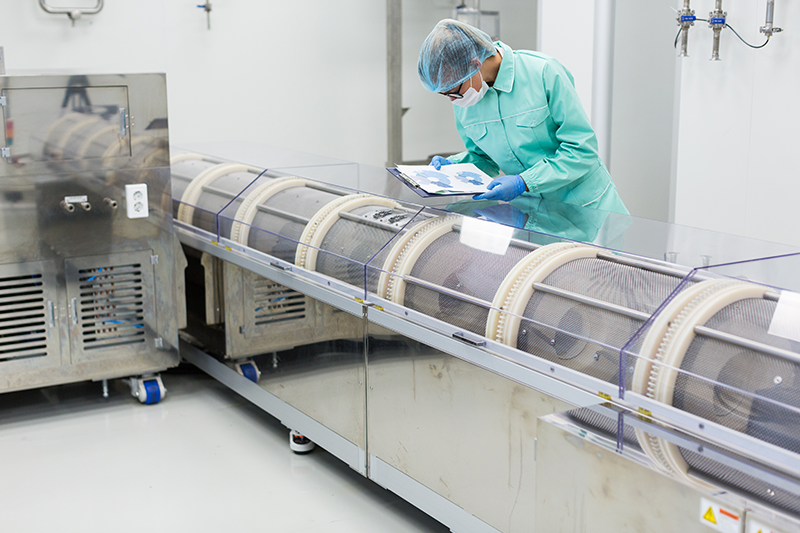
A qualified and properly trained team is essential to ensure the safe and accurate manufacturing of medicines. These professionals must have the knowledge and experience necessary to carry out rigorous controls at each stage of the process.
All responsibilities linked to the manufacturing process must be clearly defined and documented in procedures to avoid confusion and ensure consistent application of appropriate manufacturing standards, while maintaining data integrity. This includes keeping a secure record of who has done what in the manufacturing process.
Data integrity is a fundamental part of the regulations in GMP regulated environments, and includes a section regarding the mandatory correct identification of employees that perform each task, which for the FDA and EMA are:
- FDA 21 CFR part 11 – Electronic Records, electronic signatures – Scope and application.
- EU GMP Annex 11 (EMA).
Although very similar, the FDA regulations are more detailed than those of the EMA, in everything related to the correct identification of each employee who performs each of the tasks in the production processes.
Identification of employees in current drug manufacturing processes
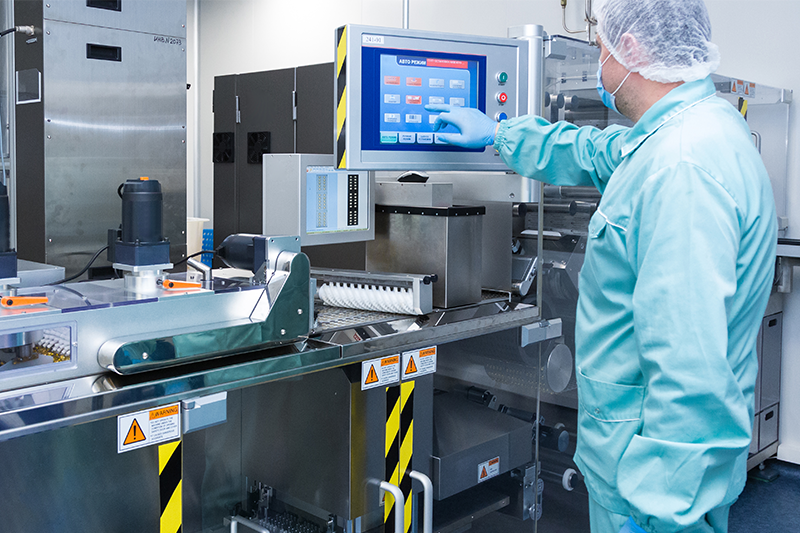
The pharmaceutical companies with digitized manufacturing processes use different types of manufacturing control software: ERPs (Enterprise Resource Planning) specialized in industrial environments, MES (Manufacturing Execution System) for the execution of tasks in the manufacturing and conditioning areas, and/or LIMS (Laboratory Information Management System) of the quality control laboratory.
In these cases, employees sign in the software with their login and password when they have performed a certain action. The action itself is recorded, who performed it, and automatically the place from where it was performed (the PC that is in the manufacturing room itself), as well as the date and time of the electronic signature.
Because, in compliance with pharmaceutical regulations, all processes in the manufacture of medicines must be signed with a signature of the responsible person. For example: the employee who carried out a weighing, the chief pharmacist who verifies the dispensing and weighing of the medicine, and the quality assurance inspector who validates all the weighings and their content.
In many cases, the activities described are still carried out on paper, as there is no system that digitizes the manufacturing processes. The employee will record by manually writing, for each action, the place, date and time, and any additional data required for the action. Finally, the employee will insert a handwritten signature on the paper.
Problems with current identification processes
With current methods we get security problems in the identification of employees, which put at risk the integrity and traceability of the data, and thus the compliance with regulations. Any employee can report activities for another, simply by knowing the password in digitized processes, or by imitating the handwritten signature in paper based processes.
The employees waste additionally a lot of time in the identification processes instead of being dedicated to the tasks for which they are essential. Which additionally causes them significant inconveniences.
The solution with biometric technologies
The right solution to the identification problems in the pharmaceutical industry involves the use of biometrics for the secure and convenient identification of employees.
Biometrics allow us to identify ourselves with our body, thereby avoiding any possibility of error or identity theft. And since we don’t have to carry anything or remember anything, it is very convenient and no time is wasted.
In later articles on this blog we describe with more detail the problems of identification in current processes, and the best way to solve them with the use of biometrics.
Find out how Verázial ID Pharma solves all employees’ identification problems in the pharmaceutical manufacturing processes.
Contact us for a demo and/or a customized analysis.
Manufacturing in the pharmaceutical industry: employees’ identification and data integrity
Current employee identification methods in pharmaceutical manufacturing processes cause data integrity breaches in GMP regulated environments, which can be solved with biometrics.
The pharmaceutical industry produces medicines that are consumed by patients, and therefore is a regulated sector to preserve the safety of patients.
Data integrity is a fundamental part of GMP (Good Manufacturing Practices) regulated environments, and includes, among other issues, the obligations to comply with for the secure identification of employees in each task.
GMP regulated environments
The national regulations are very similar to each other in general, in line with those from the main regulatory bodies worldwide:


These regulations establish the guidelines the pharmaceutical industry must follow to guarantee the proper manufacturing of medicines, cosmetics and medical products, for their safe use, both human and veterinary.
Regulatory agencies work closely to exchange information about new medicines and ensure their safety. This collaboration involves sharing data on side effects, monitoring clinical trials, and conducting inspections at manufacturers’ facilities to audit and verify regulatory compliance. Together, they work to effectively regulate medicines, ensuring high standards of quality and safety for patients.
Regulation for employees’ identification in GMP environments

A qualified and properly trained team is essential to ensure the safe and accurate manufacturing of medicines. These professionals must have the knowledge and experience necessary to carry out rigorous controls at each stage of the process.
All responsibilities linked to the manufacturing process must be clearly defined and documented in procedures to avoid confusion and ensure consistent application of appropriate manufacturing standards, while maintaining data integrity. This includes keeping a secure record of who has done what in the manufacturing process.
Data integrity is a fundamental part of the regulations in GMP regulated environments, and includes a section regarding the mandatory correct identification of employees that perform each task, which for the FDA and EMA are:
- FDA 21 CFR part 11 – Electronic Records, electronic signatures – Scope and application.
- EU GMP Annex 11 (EMA).
Although very similar, the FDA regulations are more detailed than those of the EMA, in everything related to the correct identification of each employee who performs each of the tasks in the production processes.
Identification of employees in current drug manufacturing processes

The pharmaceutical companies with digitized manufacturing processes use different types of manufacturing control software: ERPs (Enterprise Resource Planning) specialized in industrial environments, MES (Manufacturing Execution System) for the execution of tasks in the manufacturing and conditioning areas, and/or LIMS (Laboratory Information Management System) of the quality control laboratory.
In these cases, employees sign in the software with their login and password when they have performed a certain action. The action itself is recorded, who performed it, and automatically the place from where it was performed (the PC that is in the manufacturing room itself), as well as the date and time of the electronic signature.
Because, in compliance with pharmaceutical regulations, all processes in the manufacture of medicines must be signed with a signature of the responsible person. For example: the employee who carried out a weighing, the chief pharmacist who verifies the dispensing and weighing of the medicine, and the quality assurance inspector who validates all the weighings and their content.
In many cases, the activities described are still carried out on paper, as there is no system that digitizes the manufacturing processes. The employee will record by manually writing, for each action, the place, date and time, and any additional data required for the action. Finally, the employee will insert a handwritten signature on the paper.
Problems with current identification processes
With current methods we get security problems in the identification of employees, which put at risk the integrity and traceability of the data, and thus the compliance with regulations. Any employee can report activities for another, simply by knowing the password in digitized processes, or by imitating the handwritten signature in paper based processes.
The employees waste additionally a lot of time in the identification processes instead of being dedicated to the tasks for which they are essential. Which additionally causes them significant inconveniences.
The solution with biometric technologies
The right solution to the identification problems in the pharmaceutical industry involves the use of biometrics for the secure and convenient identification of employees.
Biometrics allow us to identify ourselves with our body, thereby avoiding any possibility of error or identity theft. And since we don’t have to carry anything or remember anything, it is very convenient and no time is wasted.
In later articles on this blog we describe with more detail the problems of identification in current processes, and the best way to solve them with the use of biometrics.
Find out how Verázial ID Pharma solves all employees’ identification problems in the pharmaceutical manufacturing processes.
Contact us for a demo and/or a customized analysis.
Manufacturing in the pharmaceutical industry: employees’ identification and data integrity
Current employee identification methods in pharmaceutical manufacturing processes cause data integrity breaches in GMP regulated environments, which can be solved with biometrics.
The pharmaceutical industry produces medicines that are consumed by patients, and therefore is a regulated sector to preserve the safety of patients.
Data integrity is a fundamental part of GMP (Good Manufacturing Practices) regulated environments, and includes, among other issues, the obligations to comply with for the secure identification of employees in each task.
GMP regulated environments
The national regulations are very similar to each other in general, in line with those from the main regulatory bodies worldwide:


These regulations establish the guidelines the pharmaceutical industry must follow to guarantee the proper manufacturing of medicines, cosmetics and medical products, for their safe use, both human and veterinary.
Regulatory agencies work closely to exchange information about new medicines and ensure their safety. This collaboration involves sharing data on side effects, monitoring clinical trials, and conducting inspections at manufacturers’ facilities to audit and verify regulatory compliance. Together, they work to effectively regulate medicines, ensuring high standards of quality and safety for patients.
Regulation for employees’ identification in GMP environments

A qualified and properly trained team is essential to ensure the safe and accurate manufacturing of medicines. These professionals must have the knowledge and experience necessary to carry out rigorous controls at each stage of the process.
All responsibilities linked to the manufacturing process must be clearly defined and documented in procedures to avoid confusion and ensure consistent application of appropriate manufacturing standards, while maintaining data integrity. This includes keeping a secure record of who has done what in the manufacturing process.
Data integrity is a fundamental part of the regulations in GMP regulated environments, and includes a section regarding the mandatory correct identification of employees that perform each task, which for the FDA and EMA are:
- FDA 21 CFR part 11 – Electronic Records, electronic signatures – Scope and application.
- EU GMP Annex 11 (EMA).
Although very similar, the FDA regulations are more detailed than those of the EMA, in everything related to the correct identification of each employee who performs each of the tasks in the production processes.
Identification of employees in current drug manufacturing processes

The pharmaceutical companies with digitized manufacturing processes use different types of manufacturing control software: ERPs (Enterprise Resource Planning) specialized in industrial environments, MES (Manufacturing Execution System) for the execution of tasks in the manufacturing and conditioning areas, and/or LIMS (Laboratory Information Management System) of the quality control laboratory.
In these cases, employees sign in the software with their login and password when they have performed a certain action. The action itself is recorded, who performed it, and automatically the place from where it was performed (the PC that is in the manufacturing room itself), as well as the date and time of the electronic signature.
Because, in compliance with pharmaceutical regulations, all processes in the manufacture of medicines must be signed with a signature of the responsible person. For example: the employee who carried out a weighing, the chief pharmacist who verifies the dispensing and weighing of the medicine, and the quality assurance inspector who validates all the weighings and their content.
In many cases, the activities described are still carried out on paper, as there is no system that digitizes the manufacturing processes. The employee will record by manually writing, for each action, the place, date and time, and any additional data required for the action. Finally, the employee will insert a handwritten signature on the paper.
Problems with current identification processes
With current methods we get security problems in the identification of employees, which put at risk the integrity and traceability of the data, and thus the compliance with regulations. Any employee can report activities for another, simply by knowing the password in digitized processes, or by imitating the handwritten signature in paper based processes.
The employees waste additionally a lot of time in the identification processes instead of being dedicated to the tasks for which they are essential. Which additionally causes them significant inconveniences.
The solution with biometric technologies
The right solution to the identification problems in the pharmaceutical industry involves the use of biometrics for the secure and convenient identification of employees.
Biometrics allow us to identify ourselves with our body, thereby avoiding any possibility of error or identity theft. And since we don’t have to carry anything or remember anything, it is very convenient and no time is wasted.
In later articles on this blog we describe with more detail the problems of identification in current processes, and the best way to solve them with the use of biometrics.
Find out how Verázial ID Pharma solves all employees’ identification problems in the pharmaceutical manufacturing processes.
Contact us for a demo and/or a customized analysis.
You May Also Like
You May Also Like

